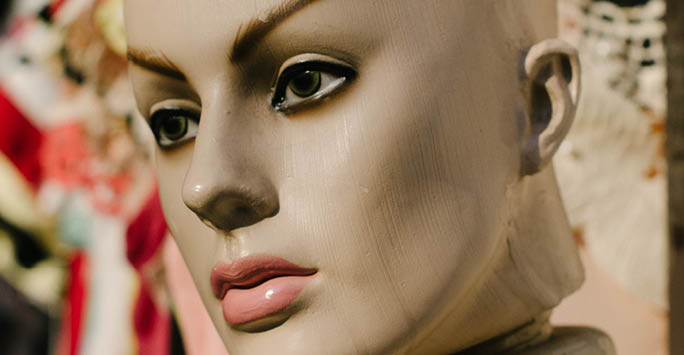
Professor Susan Pickard asks 'Can we overcome generational antagonisms between women?'.
Earlier this year, Victoria Smith’s polemic, Hags: the demonisation of middle-aged women, came out to considerable and well-deserved acclaim. In it, she analyses how older women are the target of social disapproval and often positioned on the ‘wrong side’ of the culture wars because of such beliefs – once mainstream to feminism - as the reality of biological sex, the dangers of both sex work and beauty aesthetics, the suggestion that there may be severe flaws in the logic of ‘choice feminism’ whereby all choices are of equal value as long as you ‘choose’ them.
Middle-aged women, Smith argues, have lived long enough to understand the problematic nature of the sexual economy and the limits of the empowerment that comes from (self) objectification and the brief power that individual young women gain over men. They understand, with Mary Wollstonecraft, that considering their beauty and sexuality as sources of power render them only ‘short-lived Queens’, an ephemeral power that changes nothing in society. Yet, the thrill and exhilaration associated with this kind of power means that older women’s warnings are unwelcome; not only that but they are presented as the result of ‘sour grapes’, and younger women are encouraged to believe that the fate of older women is not one they will share. ‘Women are encouraged to create themselves in opposition to the older women we will eventually become’, writes Smith. Beauty and anti-ageing technologies are such today that we will never become old and ugly. Such sentiments underpin the very gendered nature of our age wars today (Pickard, 2023) and mean that, among other things, feminism is locked in an endless cycle of reinventing the wheel.
So it was a great pleasure to read Allie Rowbottom’s new novel Aesthetica in which these themes are explored and ultimately resolved, with generational tensions that had been pulled tight to breaking point on a personal (mother-daughter) and socio-cultural level finally being relaxed and rewoven. The story is tragic, as such stories always are, but it is also ultimately hopeful as it signals towards a way beyond the intergenerational strife pitching hags against the short-lived Queens.
Set in the near future, the story begins with Anna, a 35 year-old former Instagram star, looking back on her youthful expectations and disappointments as she prepares to undergo a risky but revolutionary procedure called ‘Aesthetica™’ which promise to erase all the cosmetic surgery and aesthetic interventions she has undergone over the past decade and restore to her the face she would have had (she believes), had she not made the particular choices she did. The path she took to get to this place of rueful reflection begins fifteen years previously when Anna takes the decision, against her mother’s wishes and advice, to move from her hometown of Galveston, Texas, to live in Hollywood where she hopes to make it as a today’s ‘It girl’, the social media influencer. Once there, Anna quickly acquires a manager/boyfriend and a large Instagram following, proceeded swiftly by a taste for Botox, collagen injections, and then boob jobs. Her relationship with her mother, Naurene, is the constant backdrop to her journey, a nagging voice in or outside her head questioning all she is doing. Naurene is a living embodiment of second wave feminism. She read feminist fairy tales to Anna and her best friend as they were growing up, did her best as a single mom and cancer survivor to teach her independence and to protect her from a sexist culture. But even so there was a tiny worm in the apple as Anna reflects: 'Our task is to reclaim our power, not bury it in the service of some man. My mother explained this to us before bed, sheets made into mountains by our knees, books open before us. But after, when the books were closed, the light was shut, we heard the crunch of gravel, the front door open for this boyfriend or that one.' None of them good or kind or lasting.
Anna grew up rejecting her mother’s weakness, personal and structural, and decided that, because (through diet, gymwork, and Youtube tips) she embodied the beauty ideals of the day, her body would be the key to her success. Keen to assert her difference from her (unhealthy, unsuccessful) mother, most of all she needs to stay youthful and to insist that her body is a project not a given; that it is a choice. Her motivation is noble; whatever money she earns through her body, she intends to send back to her mom but the fundamental difference was this: "I had already decided to be different. If a powerful man chose me, it would give me power too," she reasons. Older men, holding the hands of their wives, stare at her in the street; so do their wives. Feeling her power she dismisses her mother’s menopausal message as she was saying goodbye to her in Galveston, holding a bag of frozen peas to her chest to cool herself down from her hot flashes: "It’ll be a relief, the end of all that,” she said cryptically. "Being looked at," she said. But being looked at is exactly what Anna wants. And indeed the message of the menopause – that life if finite, that the body has a will – is one both younger women and men of all ages concur in denigrating and denying.
Unfortunately, however, the dream turns dark; too late she discovers the dangers of the choice ‘rather to be short-lived Queens than labour to attain the sober pleasures that arise from equality’ as Wollstonecraft put it two centuries ago signalling that enjoying the power given to you by a man was not at all the same as possessing one’s own power. The boyfriend/manager secures Anna work, presented as an opportunity to break through into the influencer stratosphere, during which she is sexually assaulted. At this time too, her mother’s cancer returns and she dies. This marks the end of Anna’s trajectory, although over the years plastic surgeries mount up as Anna’s career falters and dies and she ends up selling beauty products in a strip mall. At the end of the novel, aged 35, Anna turns to Aesthetica™ for a fresh start at a new life. This (fictional) procedure is about reversing the old procedures surgically, stretching the skin then wrinkling it in order to give back the patient the appearance of having aged naturally. For Anna now, an aged, weathered look represents wholeness, maturity, wisdom. This conviction is accompanied also by an internal transformation towards self as subject, with self-acceptance replacing the need to achieve value and recognition through the male gaze. Here, though Naurene is dead, it is her memory that sustains Anna and facilitates her transformation: "It’s up to me to look upon myself the way I imagine she would: with love". She resolves to meet the challenges and changes (some of which will undoubtedly be unwelcome) that come with age in this spirit, concluding ‘It’s a privilege to age, I see that now’.
In fairness, this truth is very hard to ‘see’ where the insights an older woman can provide into sexism and ageism and patriarchy are dismissed as redundant as a result of her own lack of sexual value for, as Victoria Smith says, the older woman’s views ‘remain in constant dialogue with her perceived position in the sexual marketplace’. But Anna’s position also seems to have shifted more profoundly from her starting point in a conviction that choice is all to an understanding that biology is not destiny and it is society that imposes inequality upon us but at the same time nor are we plastic dolls, frozen in time, our bodies infinitely malleable to contemporary ideals of beauty and success.
The roots of intergenerational schism and the problematising of older women that is the theme of both Smith and Rowbottom’s writing is something I explore in my latest piece for Generations Journal (Pickard, 2023). In it, I suggest that, despite the recurrent nature of this struggle which has deep psycho-social roots, in the contemporary western setting this age-wars theme is pronounced in a younger generation that desperately fears ageing yet struggles to fully grow up. Whilst media representations of age war frequently depict older women as the villains (whether it be through owning a house or allowing climate change to occur under their watch), such modern mythmaking is harmful in a number of ways. Indeed, these societal perceptions of older women underpin inequality and disadvantage, as well as propping up the patriarchy for each new generation, suggesting the urgent need for the circulation of counter-myths and stories of generational cooperation and solidarity. Examples of older women as neither wicked nor pitiful are hard to find but the nuanced story presented by Allie Rowbottom in which the older woman is presented as richly multi-faceted not as stereotype and in which the relationship to maturity and a painful enlightenment on the part of the younger woman is presented within this context is one vivid and evocative example.

Book cover - Aesthetica by Allie Rowbottom
Aesthetica, written by Allie Rowbottom, is a thought-provoking novel that delves into the life of the protagonist, exploring themes of identity, beauty, and self-discovery within the context of modern society. Rowbottom's storytelling also incorporates feminist perspectives, adding depth to the narrative as it examines the complexities of personal authenticity in a world shaped by gender dynamics and societal expectations.
Susan's research interests are centred upon lay and medical conceptualisations of the ageing body, especially frailty, sex and gender and its intersection with age; age theory; feminist theory (especially drawing on second wave feminist theory that retains the importance of sex analytically); and conceptual approaches to time and temporality. Susan is the Director of the Centre for Ageing and the Life Course. Her latest article 'The Gendered Nature of Age Wars' was published by the American Society on Aging.